The Expedition to Geirröd
by Peter Krüger
©2012
[Germanic Astronomy]
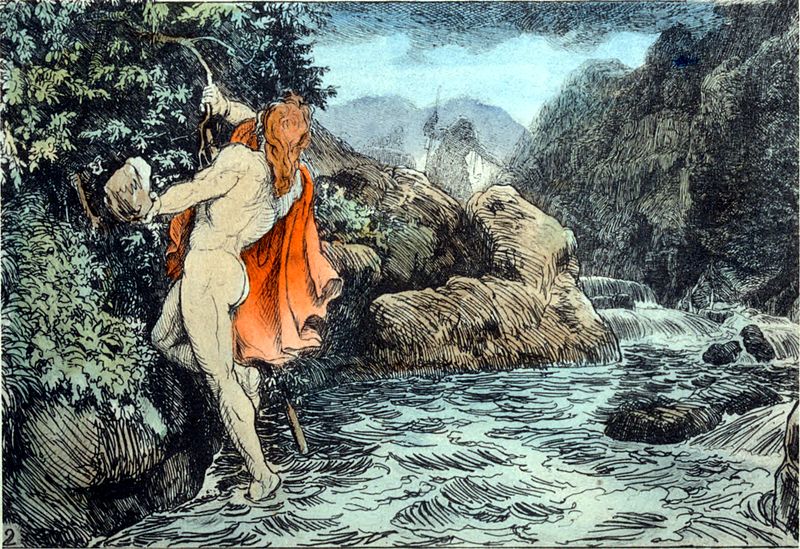
LOKI'S ADVENTURE AT GEIRRÖD'S COURT
|
Þá svarar Bragi: "Mikillar frásagnar er þat vert, er Þórr fór til Geirröðargarða. Þá hafði hann eigi hamarinn Mjöllni eða megingjarðar eða járngreipr, ok olli því Loki. Hann fór með honum, því ar Loka hafði þat hent, þá er hann flaug einu sinni at skemmta sér með valsham Friggjar, at hann flaug fyrir forvitni sakar í Geirröðargarða ok sá þar höll mikla, settist ok sá inn of glugg. En Geirröðr leit í móti honum ok mælti, at taka skyldi fuglinn ok færa honum, en sendimaðr komst nauðuliga á hallarvegginn, svá var hann hár. Þat þótti Loka gott, er hann sótti erfiðliga til hans, ok ætlaði sér stund at fljúga eigi upp, fyrr en hann hafði farit allt torleiðit. En er maðrinn sótti at honum, þá beinir hann fluginn ok spyrnir við fast, ok eru þá fætrnir fastir.
Var Loki tekinn þar höndum ok færðr Geirröði
jötni. En er hann sá augu hans, þá grunaði hann, at maðr myndi vera, ok
bað hann svara, en Loki þagði. Þá læsti Geirröðr Loka í kistu ok svelti
hann þar þrjá mánuðr. En þá er Geirröðr tók hann upp ok beiddi hann
orða, þá sagði Loki, hverr hann var, ok til fjörlausnar vann hann
Geirröði þess eiða, at hann skyldi koma Þór í Geirröðargarða, svá at
hann hefði hvárki hamarinn né megingjarðar. |
XVIII. And Bragi answered: "It is worthy to be told at length, how Thor went to Geirrödr's dwelling. At that time he had not the hammer Mjöllnir with him, nor his Girdle of Might, nor the iron gauntlets: and that was the fault of Loki, who went with him. For once, flying in his sport with Frigg's hawk-plumage, it had happened to Loki to fly for curiosity's sake into Geirrödr's court. There he saw a great hall, and alighted and looked in through the window; and Geirrödr looked up and saw him, and commanded that the bird be taken and brought to him, But he who was sent could scarce get to the top of the wall, so high was it; and it seemed pleasant to Loki to see the man striving with toil and pains to reach him, and he thought it was not yet time to fly away until the other had accomplished the perilous climb. When the man pressed hard after him, then he stretched his wings for flight, and thrust out vehemently, but now his feet were stuck fast. So Loki was taken and brought before Geirrödr the giant; but when Geirrödr saw his eyes, he suspected that this might be a man, and bade him answer; but Loki was silent. Then Geirrödr shut Loki into a chest and starved him there three months. And now when Geirrödr took him out and commanded him to speak, Loki told who he was; and by way of ransom for his life he swore to Geirrödr with oaths that he would get Thor to come into Geirrödr's dwelling in such a fashion that he should have neither hammer nor Girdle of Might with him. |
 |
In the story about the fight of Thor and Geirrödr, we shall see that Geirrödr is depicted in the sky as the constellation Böotes. His realm Geirröðargarðr is therefore the region behind the Milky Way between the constellations Scorpio and Gemini. Loki saw this great hall through a window of the outer wall. This is a clear reference to the Milky Way and in fact we find a raptor sitting on it with stretched out wings: the constellation Aquila, the eagle.
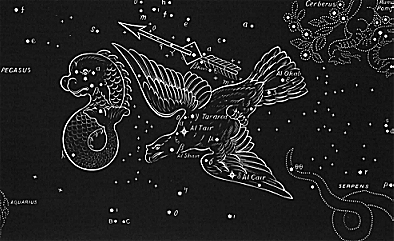 |
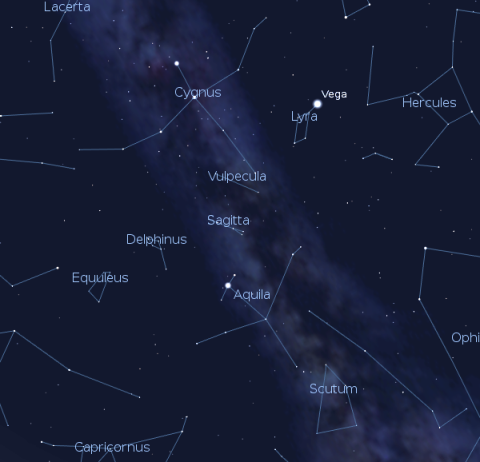 |
The story continues with the imprisonment of Loki in a chest:
"So Loki was taken and brought before Geirrödr the giant; but when Geirrödr saw his eyes, he suspected that this might be a man, and bade him answer; but Loki was silent. Then Geirrödr shut Loki into a chest (kistu) and starved him there three months."
The riddle of the chest is easy to solve if we compare the story with Völundarkvida where we also find a chest designated with exactly the same word 'kistu'. I showed that the constellation in between Aquila and Böotes, Ophiuchus was seen because of its characteristic shape also as a door and a chest still drawn this way on many star maps. In addition I described that Ophiuchus, the serpent bearer, was seen as the bound Loki fettered with the entrails of this son after the murder on Balder. We therefore find in the Geirrödr myth another trace of the connection of (the bound) Loki with Ophiuchus. It is also interesting to compare the story to the Thjazi myth where an immobilized Loki sticks to an eagle. It seems that in the Geirrödr myth the roles are reversed.
Loki was said to be imprisoned three month in the chest. Could this mean (in slight contrast to the conveyed text) that he was imprisoned till the rising of the Járngreipr (head of Cetus) defeated Geirrödr(Böotes and Ophiuchus are setting) and the eagle can fly away again?
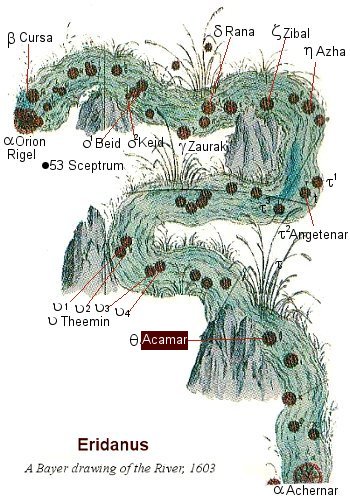 |
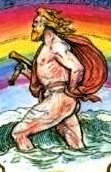 |
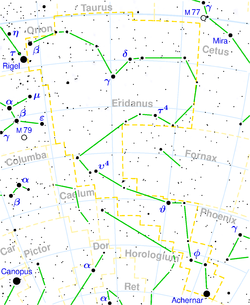 |
The Greatest River of All
Again, we continue the story in Skáldskaparmál 17 (Brodeur translation):
|
Þórr kom til gistingar til gýgjar þeirar, er Gríðr er kölluð. Hon var móðir Víðars ins þögla. Hon sagði Þór satt frá Geirröði, at hann var jötunn hundvíss ok illr viðreignar. Hon léði honum megingjarða ok járngreipr, er hon átti, ok staf sinn, er heitir Gríðarvölr. Þá fór Þórr til ár þeirar, er Vimur heitir, allra á mest. Þá spennti hann sik megingjörðum ok studdi forstreymis Gríðarvöl, en Loki helt undir megingjarðar. Ok þá er Þórr kom á miðja ána, þá óx svá mjök áin, at uppi braut á öxl honum. Þá kvað Þórr þetta:
65. Vax-at-tu nú, Vimur, Þá sér Þórr uppi í gljúfrum nökkurum, at Gjálp, dóttir Geirröðar stóð þar tveim megin árinnar, ok gerði hon árvöxtinn. Þá tók Þórr upp ór ánni stein mikinn ok kastaði at
henni ok mælti svá: "At ósi skal á stemma." |
"Thor came to spend the night with that giantess who was called Grídr, mother of Vídarr the Silent. She told Thor the truth concerning Geirrödr, that he was a crafty giant and ill to deal with; and she lent him the Girdle of Might and iron gloves which she possessed, and her staff also, which was called Grídr's Rod. Then Thor proceeded to the river named Vimur, greatest of all rivers. There he girded himself with the Girdle of Might and braced firmly downstream with Grídr's Rod, and Loki held on behind by the Girdle of Might. When Thor came to mid-current, the river waxed so greatly that it broke high upon his shoulders. Then Thor sang this: Wax thou not now,
Vimur, "Then Thor saw Gjálp, daughter of Geirrödr, standing in certain ravines, one leg in each, spanning the river, and she was causing the spate. Then Thor snatched up a great stone out of the river and cast it at her, saying these words: 'At its source should a river be stemmed.' Nor did he miss that at which he threw. In that moment he came to the shore and took hold of a rowan-clump, and so climbed out of the river; whence comes the saying that rowan is Thor's deliverance. |
On the way to Geirröd's, Thor must wade through the river Vimur, the greatest river of all. He is able to accomplish this task by the help of a staff called gríðarvölr and a mighty girdle called megingjörð, both of which he obtained from the giantess Gridr. During this crossing, Loki is said to hang on the belt of Thor. Thor climbs out of the river by taking hold of a rowan tree. Thus there is a saying that rowan is Thor’s deliverance.
I assume this story is based on star lore. It is written e.g. in the Phainomena of Aratus (270 BC), that the celestial river Eridanus is closely connected to the constellation Orion. Both constellations are rising together on the eastern horizon. As Orion rises, laying on his side, it indeed looks like the river reaches his shoulder stars. Orion is famous for its belt, formed by three bright stars: Alnitak, Alnilam and Mintaka. Loki is said to hold onto the belt of Thor. I assume this is a reference to Sirius, the brightest star of the sky, rising just after Orion. The girdle stars are pointing exactly in the direction of Sirius. In his hand Thor holds the gríðarvölr. The first stars rising from the constellation Orion is a series numbered the Pi-stars arranged in the shape of a bow or a staff. Thor is said to throw a stone to the source of the river— the source being one of Geirröd's daughters, standing astride the waters and causing them to rise. This might either be a reference to the bright star Rigel being at the same time the left foot of Orion and the first star of Eridanus or to the star Theta Eridani, also called Acamar (from Arabian Ākir an-nahr, end of the river).
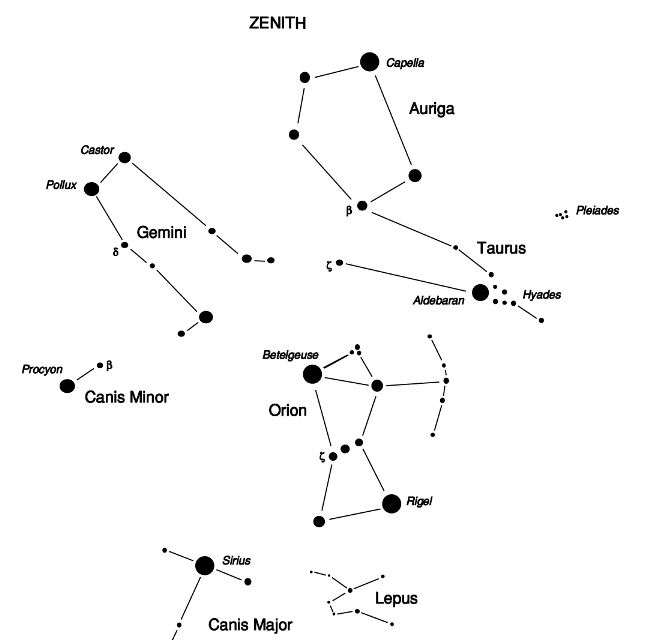 |
|
| x | x |
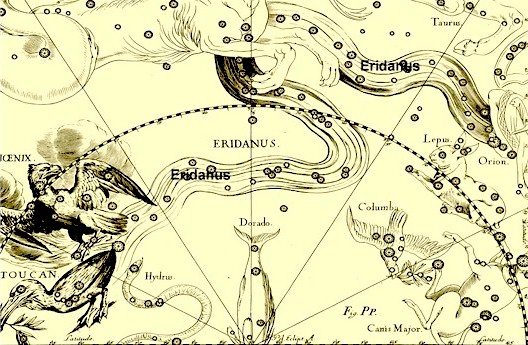 |
|
But what about the rowan? To solve this riddle we have to evaluate the stars above Sirius. We find here the constellation Canis Minor with the bright star Procyon. Interestingly this constellation is described according to Richard Allen (Star names) in Arabian sources not only as a dog but also as Al Jummaiza, the mulberry tree! It seems that the rowan is the northern equivalent to the Arabic mulberry tree. The meaning could be that starting from the rising of Procyon the constellation Orion is higher in the sky than Eridanus.
But is it really possible that Orion represents Thor in
this story? It is said that Thor spent the night with the giantess Gridr and she gave
him her staff, gloves and girdle. Here, I think the meaning behind this is that
Thor, as the planet Jupiter, reaches Orion (Gridr) and takes “possession” of her.
This explains why Thor can be Orion in this story but as Taurus in other tales. We find this pattern also for Loki (most probably the planet
Saturn) taking the shape of a fish, a bird, a horse, etc., all of them references
to constellations he “occupies”.
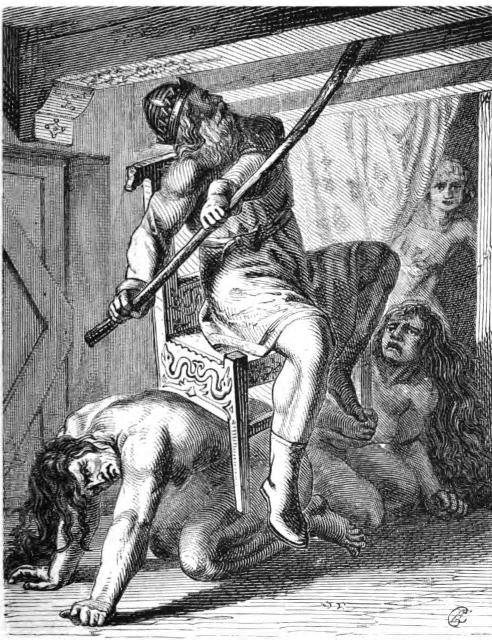
Gjálp and Greip
Geirröð's Daughters
|
En er Þórr kom til Geirröðar, þá var þeim félögum
vísat fyrst í geitahús til herbergis, ok var þar einn stóll til sætis,
ok sat Þórr þar. Þá varð hann þess varr, at stóllinn fór undir honum upp
at ræfri. Hann stakk Gríðarveli upp í raftana ok lét sígast fast á
stólinn. Varð þá brestr mikill, ok fylgði skrækr. Þar höfðu verit undir
stólinum dætr Geirröðar, Gjálp ok Greip, ok hafði hann brotit hrygginn í
báðum. Þá lét Geirröðr kalla Þór í höllina til leika. Þar váru eldar stórir eftir endilangri höll. En er Þórr kom gagnvart Geirröði, þá tók Geirröðr með töng járnsíu glóandi ok kastar at Þór, en Þórr tók í móti með járngreipum ok færir á loft síuna, en Geirröðr hljóp undir járnsúlu at forða sér. Þórr kastaði síunni ok laust gegnum súluna ok gegnum Geirröð ok gegnum vegginn ok svá fyrir útan í jörðina." |
"Now when Thor came before Geirrödr, the companions were shown first into the goat-fold[1] for their entertainment, and there was one chair there for a seat, and Thor sat there. Then he became aware that the chair moved under him up toward the roof: he thrust Grídr's Rod up against the rafters and pushed back hard against the chair. Then there was a great crash, and screaming followed. Under the chair had been Geirrödr's daughters, Gjálp and Greip; and he had broken both their backs. Then Geirrödr had Thor called into the hall to play games. There were great fires the whole length of the hall. When Thor came up over against Geirrödr, then Geirrödr took up a glowing bar of iron with the tongs and cast it at Thor. Thor caught it with his iron gloves and raised the bar in the air, but Geirrödr leapt behind an iron pillar to save himself. Thor lifted up the bar and threw it, and it passed through the pillar and through Geirrödr and through the wall, and so on out, even into the earth. |
Since Thor still has the Gríðarvölr in his hand, we can assume that he is still represented by Orion pushing his staff (the Pi-stars) against the roof (the Milky Way). But where are we to find the chair he is sitting on?
The constellation rising next after Orion is Lepus, the hare. The principal stars alpha, beta, gamma, and delta of this constellation in Arabian sources are called Al Kursiyy al Jabbar and Al `Arsh al Jauzah, 'the Chair of the Giant' (Orion) and the 'Throne of the Jauzah'(Orion).
However, we now encounter a problem if we identify Gjálp and Greipr as the constellation Cetus, which has already risen, and therefore cannot be below the chair at the same time. Actually, there is no constellation below Lepus at all, if we consider the description of Aratus of Soli (Phainomena, 270 BC):
"Other stars, mean in size and feeble in splendour, wheel between the Rudder of Argo and Cetus, and beneath the grey Hare's sides they are set without a name. For they are not set like the limbs of a fashioned figure, such as, many in number, fare in order along their constant paths, as the years are fulfilled stars, which someone of the men that are no more noted and marked how to group in figures and call all by a single name. For it had passed his skill to know each single star or name them one by one. Many are they on every hand and of many the magnitudes and colours are the same, while all go circling round. Wherefore he deemed fit to group the stars in companies, so that in order, set each by other, they might form figures. Hence the constellations got their names, and now no longer does any star rise a marvel from beneath the horizon. Now the other stars are grouped in clear figures and brightly shine, but those beneath the hunted Hare are all clad in mist and nameless in their course."The description by Aratus might help to explain the broken backs of Gjálp and Greip, "the stars are not set like the limbs of a fashioned figure". Currently I find no way to solve the problem of Gjálp standing on Vimur (Eridanus) and sitting below the chair (Lepus). However, I get the impression that the adventures of Thor travelling to Geirröd are composed of several single tales compiled by an editor who caused several inconsistencies as he did not recognize the astral origin anymore.
After the miserable failure and defeat
of his daughters, Geirröd himself attacks Thor. The details of the fight
between Thor and Geirröd are so obscure that again, they can only be explained convincingly by using
star lore:
"Then Geirrödr had Thor called into
the hall to play games. There were great fires the whole length of the
hall. When Thor came up over against Geirrödr, then Geirrödr took up a
glowing bar of iron with the tongs and cast it at Thor. Thor caught it
with his iron gloves and raised the bar in the air, but Geirrödr leapt
behind an iron pillar to save himself. Thor lifted up the bar and threw
it, and it passed through the pillar and through Geirrödr and through
the wall, and so on out, even into the earth.
As in the fight between Thor and Hrungnir it seems that
the opponents are standing quite some distance from one another, either standing
at one
end of the hall. In other words the hall is the whole of the starry skies. The
great fires refer to all the other constellations illuminating the sky in
between.
Geirröd takes a glowing bar of iron up with tongs.
What can this refer to? The mightiest tongs in heaven are surely the huge claws
of the constellation Scorpion (changed later into the modern constellation of
the Scales). Already in Sumerian times the claws have be seen as a seperated
part of the whole of Scorpion. Another part is the Scorpion's Breast, formed by
the bright red super-giant star called Antares. In cuneiform signs it contains
the element LI9, representing a brazier.
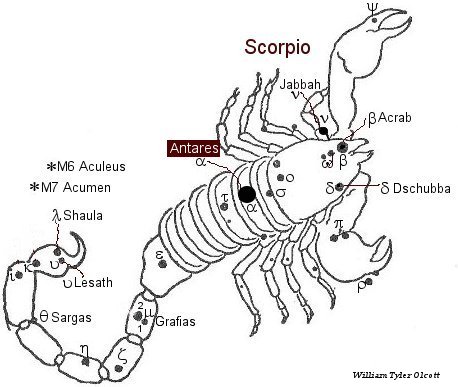 |
I assume that this bright red star Antares is the glowing piece of iron we are looking for. Geirröd is throwing it against Thor who catches it with the Járngreipr. As I showed before the Járngreipr is identical to the head of the constellation Cetus forming a fist. Now Geirrödr is seeking protection behind an iron pillar, the Járnsúlu. Looking to the region around Scorpion we understand what the great pillar is: It is the Milky Way forming the barrier between the world of the gods and the giants. As the Milky Way is shiny but not as bright as the constellations who often are described as consisting of gold (Gullfaxi, Gullinborsti, Gullinkambi etc.) it's said to be made out of iron. I assume that also the Járnvidr mentioned in Völuspá refers for the same reason to the Milky Way. But where does the hot piece of iron fly to? The answer might be another bright red star: the star Arcturus sticking in the lower parts (below the girdle!) of the constellation Böotes. And indeed I already came to the conclusion several times that Böotes represents a giant (e.g. Gymir) so he would be a perfect candidate for the identity of Geirröd.
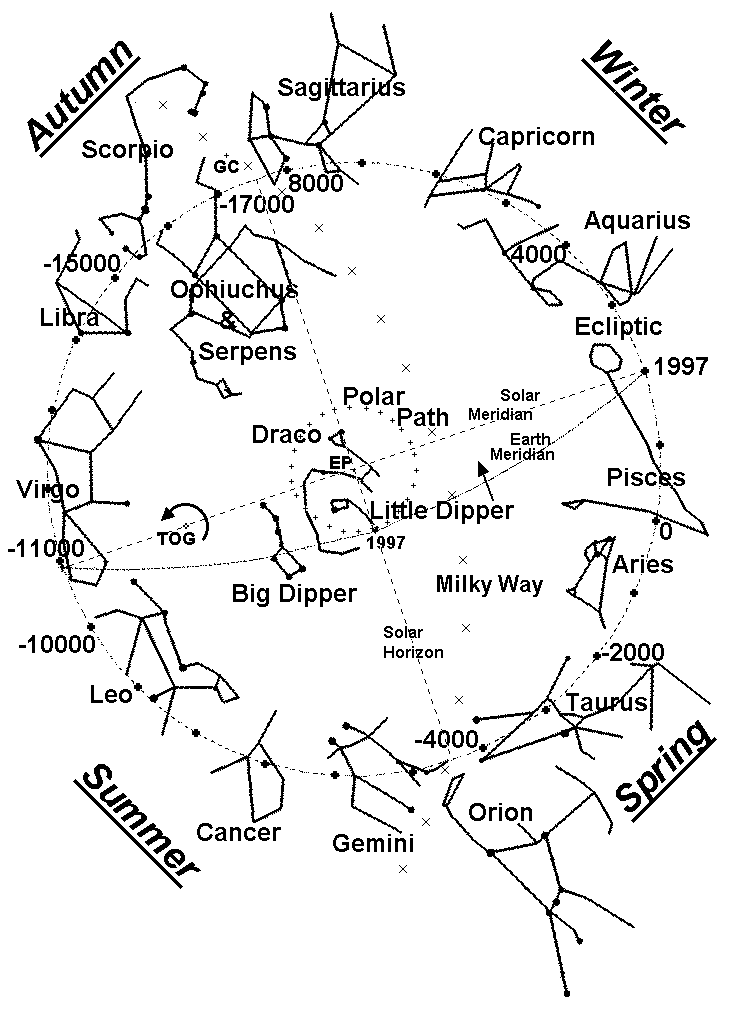 |
If we summarize the myth of the fight of Thor and Geirröd it describes that at the setting of the constellation of the Scales and Scorpion (Antares) the head of Cetus is rising. And a short time after the rising of the head of Cetus indeed Arcturus and Böotes are setting on the western horizon.
This explanation demonstrates once again that we really need to focus on the attributes of the actors. Thor is not the primary focus of the myth but rather his Járngreipr/Iron Gloves (head of Cetus), as in the case of the Hrungnir myth, where the rising of Mjöllnir (the Pleiades) is the key to the story.